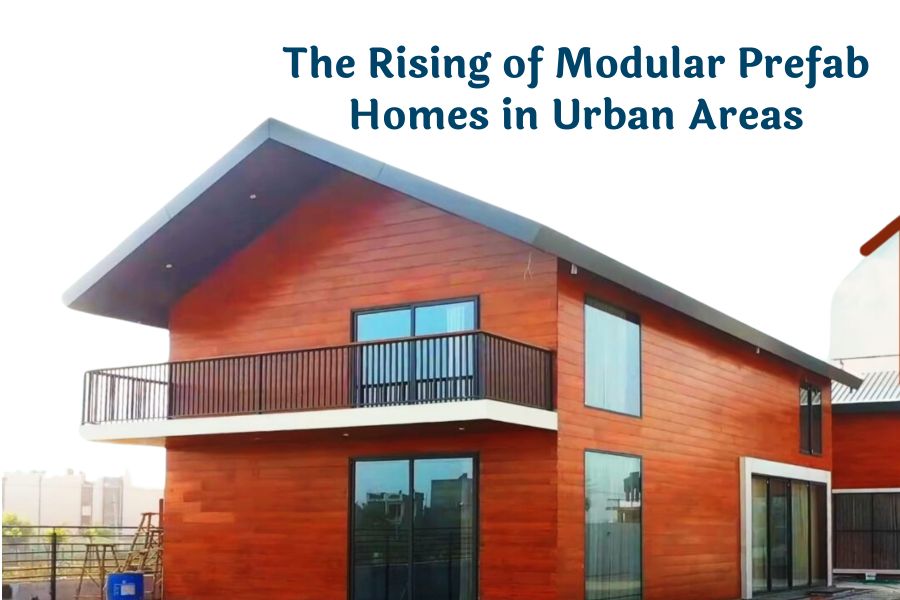Prefab homes, also known as prefabricated homes, have become a significant trend in the housing market. These homes, constructed off-site and then assembled on location, offer numerous benefits, making them an attractive option for many homebuyers.
What Are Prefab Homes?
Prefab homes are residential buildings made from components manufactured in a factory, which are then transported to and assembled on-site. This method differs from traditional construction, where homes are built entirely at the location where they will stand.
Types of Prefab Homes
Prefab homes come in various forms, each with unique characteristics:
1. Modular Homes
Modular homes are built in sections, or modules, in a factory. These modules are then transported to the building site and assembled to create a complete home. This type of prefab home often resembles traditional homes in appearance and structure.
2. Panelized Homes
Panelized homes are constructed using panels – such as walls, floors, and roof sections – that are manufactured in a factory. These panels are shipped to the building site and assembled. This method allows for more flexibility in design compared to modular homes.
3. Pre-Cut Homes
Pre-cut homes, also known as kit homes, involve pre-measuring and cutting all the materials needed for construction in a factory. The components are then shipped to the building site, where they are assembled according to the provided plans.
4. Shipping Container Homes
Shipping container homes are made from repurposed shipping containers. These containers are modified and outfitted to create living spaces. This type of prefab home is known for its sustainability and unique, modern aesthetic.
Benefits of Prefab Homes
Prefab homes offer several advantages over traditional construction methods.
Cost-Effectiveness
Prefab homes are generally more cost-effective than traditionally built homes. The controlled factory environment reduces waste and allows for bulk purchasing of materials, leading to lower overall costs.
Time Efficiency
Construction of prefab homes is typically faster than traditional building methods. Since components are built in a factory, weather delays are minimized, and on-site assembly can be completed quickly.
Quality Control
Building in a factory setting allows for greater quality control. Prefab homes are constructed using precise measurements and consistent procedures, resulting in high-quality, durable structures.
Sustainability
Prefab homes often have a smaller environmental footprint compared to traditional homes. The efficient use of materials, reduced waste, and potential for incorporating sustainable features make them an eco-friendly option.
Challenges of Prefab Homes
While there are many benefits, prefab homes also come with some challenges.
Limited Customization
Prefab homes, especially modular and panelized types, can be limited in terms of customization. Homebuyers may have fewer options for personalization compared to traditional custom-built homes.
Financing and Insurance
Securing financing and insurance for prefab homes can sometimes be more complex. Lenders and insurers may have specific requirements or limitations for these types of properties.
Perception and Stigma
There can be a perception or stigma that prefab homes are of lower quality or less desirable than traditionally built homes. However, this is changing as more people recognize the benefits and quality of modern prefab homes.
The Future of Prefab Homes
The future looks bright for prefab homes. Advances in technology and design are making these homes more attractive and viable for a wider range of buyers.
Innovations in Design
Innovative designs are making prefab homes more customizable and aesthetically pleasing. Architects and designers are exploring new ways to create beautiful, functional living spaces using prefabrication methods.
Green Building Practices
As sustainability becomes a priority for many, prefab homes are leading the way in green building practices. The efficient use of materials and energy, as well as the ability to incorporate eco-friendly features, make them an ideal choice for environmentally conscious buyers.
Urban Solutions
Prefab homes are increasingly seen as a solution for urban housing challenges. Their quick construction and cost-effectiveness make them suitable for addressing housing shortages in cities.
Conclusion
Prefab homes are transforming the housing industry with their numerous benefits, including cost-effectiveness, time efficiency, and sustainability. While there are some challenges, ongoing innovations in design and building practices are making prefab homes an increasingly popular and viable option for modern homebuyers.

